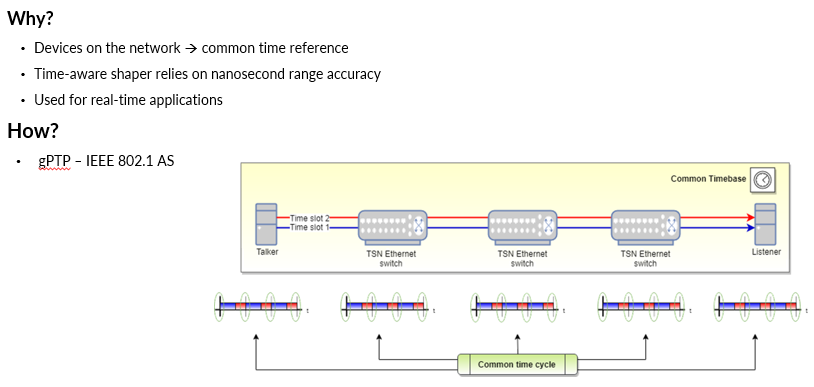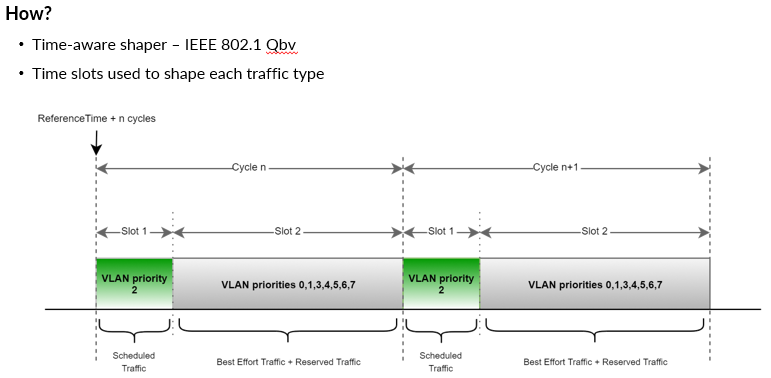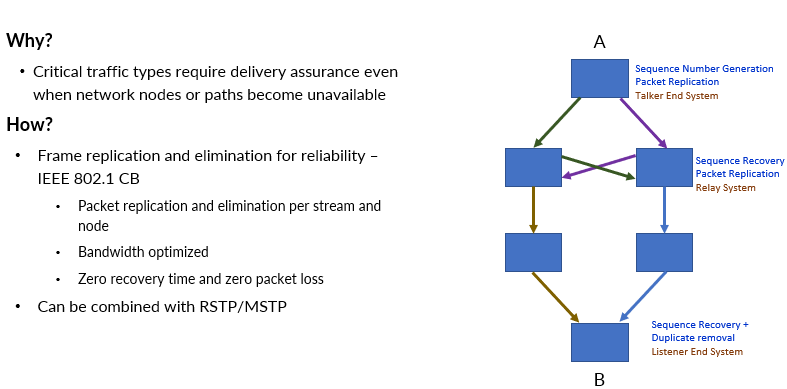The demand for higher bandwidth in the car is growing quickly. On one side, all the entertainment and connectivity elements, and on the other, all the control-related electronics.
As a result, automotive manufacturers are adding a plethora of computer-based systems that need interconnection. Ethernet, with the latest innovations, is the best candidate to face this challenge from the technical and economical point of view. Lately, the automotive sector is also taking advantage of the benefits of TSN.
Ethernet in Automotive
Nowadays modern cars include a wide range of sensors and actuators: RADAR, LIDAR, ultrasonic, cameras… Traditionally some of the communications of those devices used point-to-point connections or specific communication protocols, such as CAN or LIN. However, due to the increasing number of devices in the car that needs to be interconnected and the specific requirements of those communications, these type of connections are not suitable anymore. In fact, the complexity of the interconnections harnesses has increased exponentially, which is a big problem as manufacturing of these elements is a manual process that usually can not be automated.
Ethernet becomes an attractive solution as the interconnection network for modern cars, as it is general purpose and provides a high bandwidth communications channel. However, there is a major problem with Ethernet, which is that it is designed to be a best-effort solution that lacks the quality-of-service mechanisms, bandwidth control, determinism, or redundancy.

Ethernet lacks the quality of service mechanisms, bandwidth control, determinism, or redundancy
In this sense, Time-Sensitive Networking emerges as a set of standards defined by IEEE to address the lack of determinism and QoS of Ethernet Networks.
TSN in Automotive
There are many IEEE standards that define TSN, but in the case of our TSN IP Core solution, the main standards included for automotive are:
Time Synchronization
Time synchronization is a key part of TSN, as some of the bandwidth control and shaping functions rely on a shared time reference accessible by all the devices on the network.
- TSN uses IEEE 802.1 AS protocol to provide time synchronization to all the TSN devices in an Ethernet network. It relies on a master-slave mechanism that allow the slaves to get master’s time of day and syntonize their clocks to achieve nanosecond level accuracy.
- In order to provide high precision (nanosecond level) accuracy, it is necessary to perform hardware timestamping of the IEEE 802.1 AS messages.

Traffic Shaping
When using Ethernet as the communications mechanism in the car, it is necessary to ensure the coexistence of several services, applications and devices that may have different bandwidth, latency and loss tolerance requirements. The different traffic classes are classified using the priority bits (PCP) of the VLAN TAG
Traffic shaping is the mechanism defined in TSN to control the bandwidth and latency of the communications.

High Availability
As there are communications in the car that have a low or even null packet loss tolerance, it is required that TSN provides a mechanism to ensure high availability and redundancy of the communications.
- IEEE 802.1 CB is a zero-time recovery redundant protocol defined in the TSN suite of protocols. It provides communication redundancy and zero packet loss in an event of link disconnection between a pair of devices.
- RSTP or MSTP are protocols that provide high availability over Ethernet, However, they have recovery times in which communications are halted and data can be lost.

SoC-e solutions for Automotive
System-on-Chip engineering S.L., SoC-e, is pioneer developing a complete IP portfolio of solutions for Ethernet networking and synchronization. During last years has supported automotive customers with Ethernet and TSN focused custom projects while transferring out-the-box technology solutions. SoC-e offers to the automotive sector the following products:
- 1G TSN Switch IP Core
- 10G TSN Switch IP Core
- TSN EndPoint IP Core
- 1G Ethernet Switch IP Core
- 10G Ethernet Switch IP Core
Apart from IP Cores, we also develop Networking Modules or SoMs, specially developed for these kind of applications.
